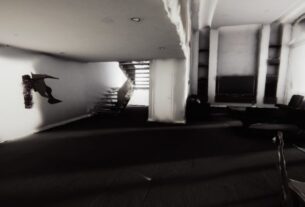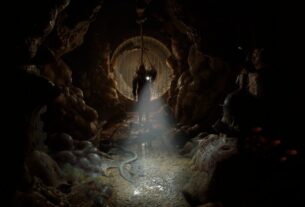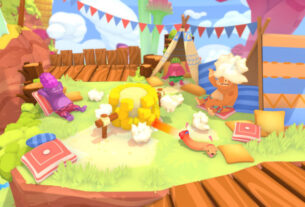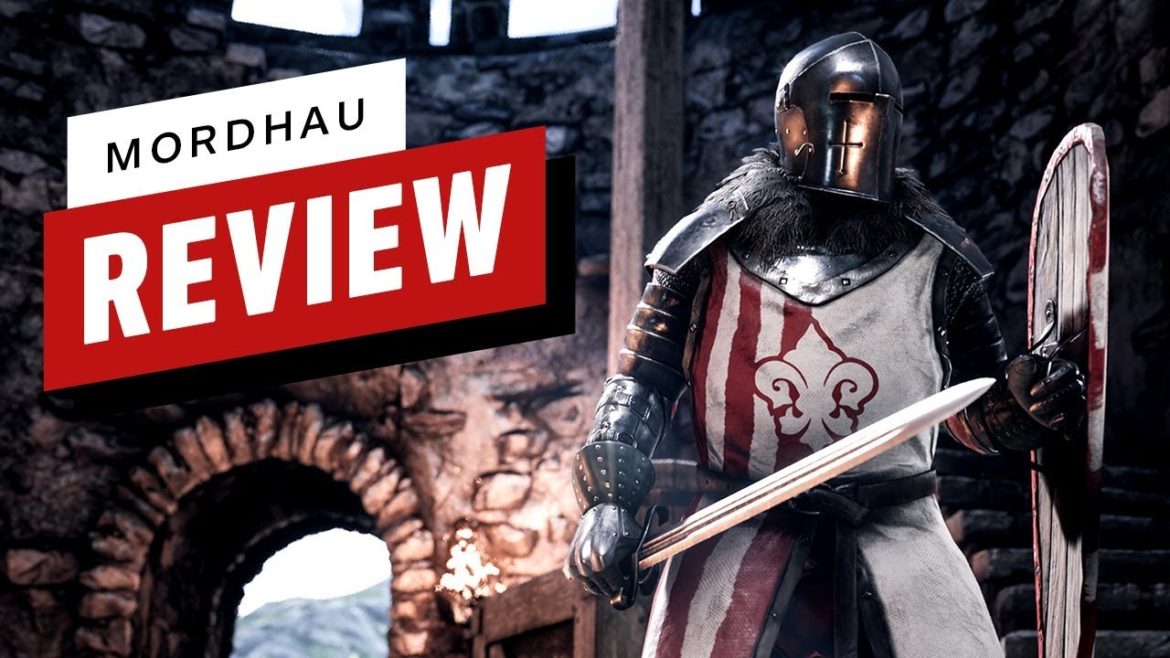
The sun beats down on the battlefield as the war cries of my fellow soldiers ring out. Catapults pelt us from a distance and the giant boulders explode onto the ground around us with a great thud, thinning our numbers before we can reach the contested checkpoint. Those who make it through are greeted by a line of enemies hastily building a blockade, but we tear through them like a hot knife through butter and take the checkpoint in a flurry of steel and blood. As I stand over the decapitated body of a downed enemy, a spear flies out from behind a barrier and catches me unawares, putting me down on the spot with a sickening, meaty crash, before I respawn back at the camp I’d just come from.
This is the bloody brutality of Mordhau, a strategic, punishing and ultimately satisfying first-person multiplayer medieval combat game. You need patience and perseverance to overcome the steep learning curve of its melee mechanics. Far from being a simple hack-and-slasher, Mordhau focuses largely on learning and executing the finer points of melee combat, from footwork and positioning through to timing numerous attack and defensive maneuvers. It feels clunky at first, but once it clicks, it’s brilliant. Timing a riposte–a parry followed up by a quick counter-attack–feels great, and even better if it causes heads to roll. But there are several hours of less-thrilling learning to do first, and despite its attempts at onboarding, the game could do more to help new players get up to speed.
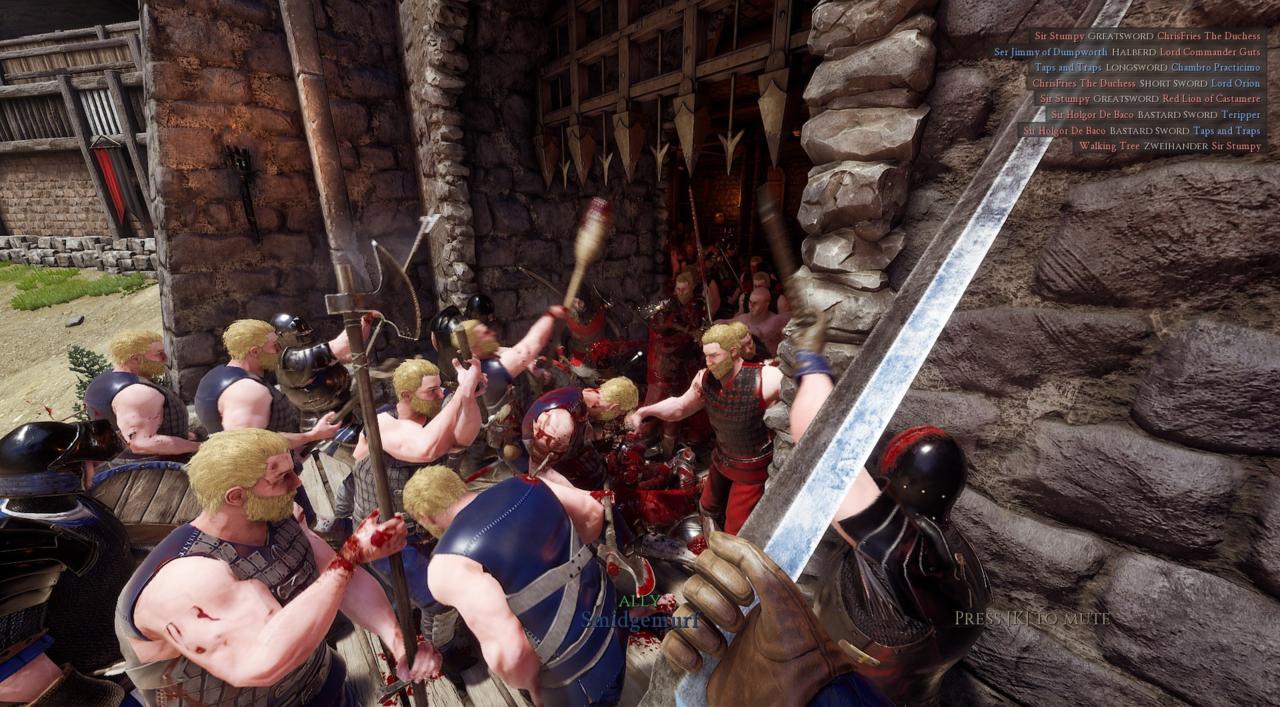










A 15-minute tutorial will run you through the basics, asking you to prove you can perform a series of slashes, parries, and other moves. Helpful to a point, these lessons fail to provide the feedback needed to work towards more sophisticated techniques. Some, like chambering–a complex maneuver where you counter an attack with an attack of your own from the same angle, executed at the exact moment you’re about to get hit–require pinpoint timing and are difficult to execute successfully. The lack of visual feedback makes learning when to strike a process of trial and error, which, in the relatively safe confines of the tutorial, means taking a few extra swings at your NPC trainer until you get it right. But during a match it’s a slow, merciless grind of death after death, waiting to respawn then charging back to the action against the might of more experienced players.
Because of this, the first five or so hours online feel like a gauntlet in the worst way. You will be cut down time after time and not really understand why, and it’s here that most players will bounce off Mordhau. Annoyingly, you also don’t earn any progress when playing against AI offline, and they aren’t effective training dummies either–they mostly follow each other in long lines and clash in groups, slashing and stabbing wildly. So you’re essentially forced to head into the online meat grinder to progress.
Weapons mastery aside, progress comes in the form of gold, which is used to purchase items, armor, and weapons, as well as XP, with which you can unlock new gear to then buy with gold. As the hours tick over, not only does your character level grow, but you slowly become better at the game, and suddenly what seemed at the start like an impossible hill to climb begins to feel a lot less intimidating. The subtle windup of enemy attacks begins to stand out more, making parries and ripostes far simpler. You start to carefully change the timing of attacks by leaning in or out of each swing, and it’s once you start to grasp these more detailed nuances that Mordhau truly begins to shine and the real potential of its wonderfully intricate combat begins to show itself. Opening up an opponent after a successful parry, taking aim at their exposed points and landing the killing blow only takes a couple of seconds but requires the utmost control to execute, making every kill feel earned, and the open combat is more enjoyable and expressive than simple hacking and slashing.
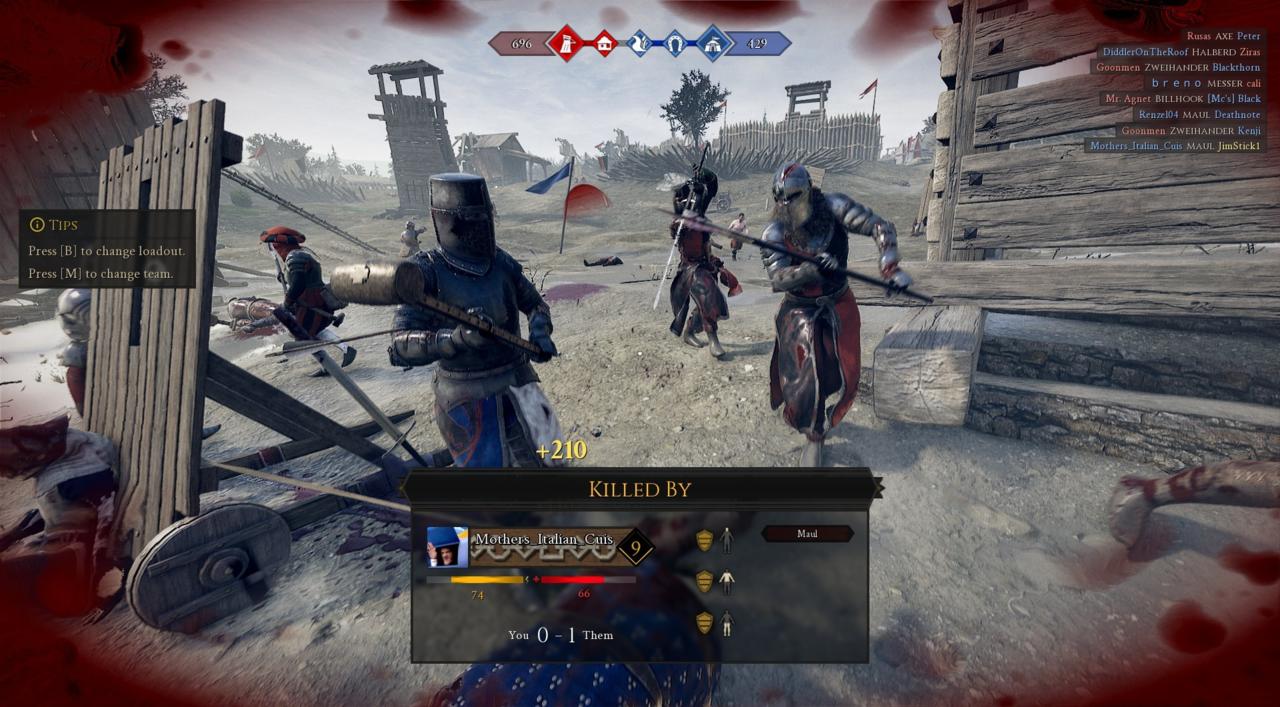
There are three main game types to choose from–Frontlines, Battle Royale, and Horde–though you can also privately set up your own deathmatch or team deathmatch servers. Frontlines is the main mode, with two teams of 32 fighting to secure and hold each checkpoint until one either dominates the map and completes the objective or eliminates the opposition by clearing their respawn tickets. Battle Royale is a solo, winner-takes-all round where everyone starts with nothing and has to scavenge for weapons and armor in order to survive, while Horde lets up to six players run together in wave-based, PvE combat. As you clear each wave, you earn more gold that can be used to purchase items and weapons during the round at different points across the map.
Frontlines feels the best of these thanks to its objective-based gameplay, letting those less skilled with the weapons make an active contribution–though if the spectacle of battle does nothing for you, charging into the fray with your screaming teammates certainly will. It can be simultaneously chilling and empowering. As a single death ends the round in both Battle Royale and Horde, they’re far less forgiving compared to Frontlines and feel more geared towards experienced players. Once you know how to wield your weapon they can be just as rewarding, though, if a little slower in terms of action.
You can choose several loadouts with varying styles of armor and weaponry from the outset of each match. With less armor, you’re lighter and can move faster but are more susceptible to sword attacks, whereas heavily armored characters offer more protection against swords but are slower all around and can be more easily bested with blunt weapons. Each weapon type fits into varying play styles that all feel effective in their own right, but each has a more functional role depending on where you are on the map. Longer weapons will naturally have a longer reach but can’t be swung side-to-side in tight spaces as they’ll catch on the walls and obstacles, so they can only be thrust or swung overhead instead. Spears and other one-handed weapons can be thrown if need be, while larger weapons can use an alternative grip to better knock off opponents’ armor. There are always options for whatever situation you find yourself in, adding to the already excellent fighting experience by offering solid alternatives, provided you’ve got the right loadout.
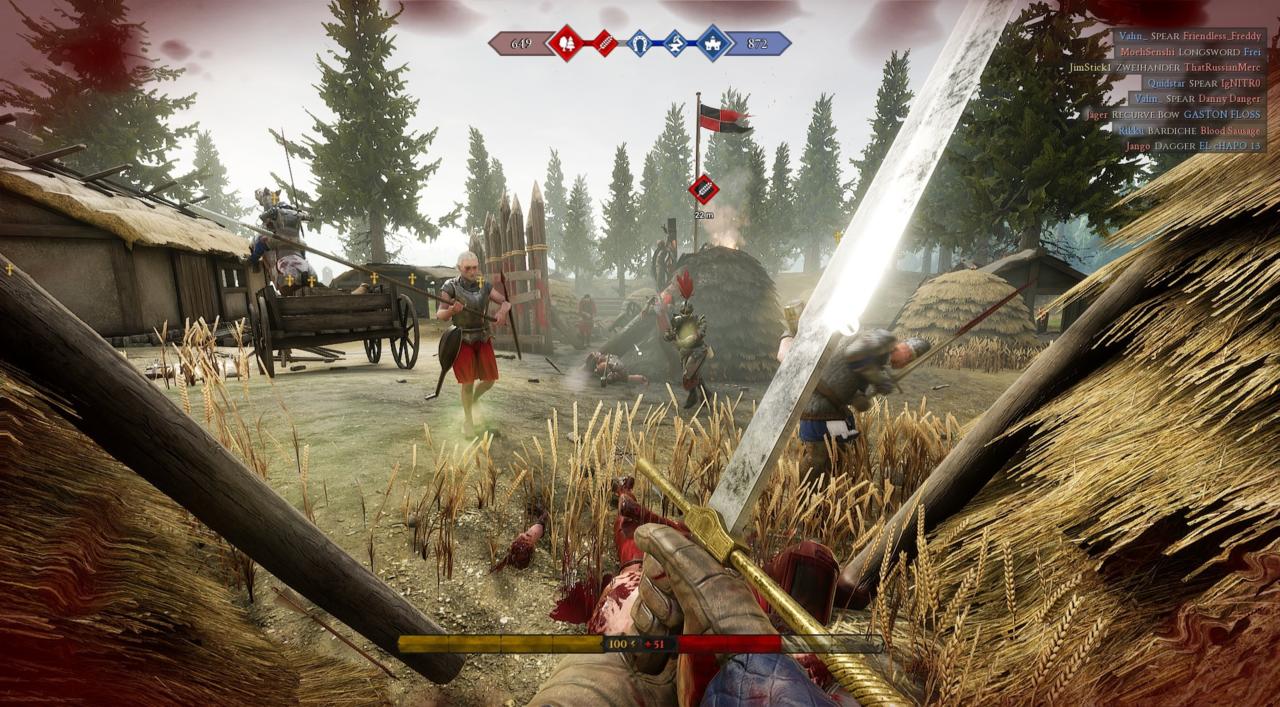










The maps themselves are large, ranging from a snowy mountain castle to a wide-open battlefield with fortress encampments at either end of a rolling valley, but the game could still do with a bit more variety. There are seven maps in all, though some are limited to certain game types. They’re also a little static–you don’t have to worry about weather or adverse conditions–but they still look the part, especially when bathed in the bloody aftermath of combat. Battles can look spectacular from afar, but never quite as good as they do up close, where the raw energy is palpable and intimidating. Ragdolled bodies are stretched across the ground and blood washes over the landscape as the battle rages, leaving a trail of brutality in its wake as the fight moves from checkpoint to checkpoint.
Mordhau is tough, violent, beautiful, and doesn’t pull its punches. Despite an intense learning curve that could be better alleviated with more tutorials or better practice tools, its supreme swordplay and combat mechanics eventually outshine any initial frustration. The scale of battle is overwhelming and chaotic, but there’s a definite sense to all the nonsense that, once you uncover it, gives you an incredible rush every time you go toe-to-toe with the enemy–even if you don’t come out the other side intact.

